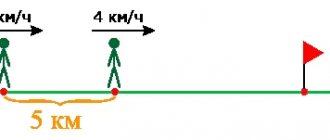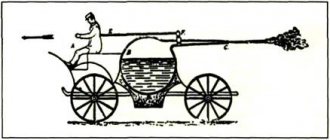A brief history of the creation and development of watches
10 Dec 2020 Details Category: About watches
The history of watches goes back several thousand years. For a long time, man has tried to measure time, first by the day and night luminaries and stars, then with the help of primitive devices and, finally, using modern high-precision complex mechanisms, electronics and even nuclear physics.
The history of watch development is the continuous improvement of time measurement accuracy. It is reliably known that in Ancient Egypt they measured time in a day, dividing it into two periods of 12 hours.
There is also evidence that the modern sexagesimal measurement model came from the Sumerian Kingdom around 2000 BC.
History of watches for children. Conversations about time.
Let's talk about the types of watches.
Tell me, what is the name of the device that keeps track of time within a day? — This device is called a clock.
The most ancient clocks that people used to approximately know the time were solar clocks. The dial of such a watch was placed in an open place, brightly illuminated by the sun, and the clock hand served as a rod that cast a shadow on the dial.
The hourglass also came to us from ancient times. Maybe some of you have seen them? After all, hourglasses are still used in medicine when you need to measure a small but very specific period of time.
An hourglass consists of two small cone-shaped vessels connected at the tops to each other, with a narrow hole at the junction of the vessels. The upper vessel contains sand, which seeps in a thin stream through the hole into the lower vessel. When all the sand from the upper vessel is in the lower one, a certain time passes, for example, one minute.
Now let's talk about modern watches. Each of us has a clock in our house. Maybe not alone. This is a home clock.
Try to talk about them. Where are they located? What is their shape?
Watches can be wristwatches. They are put on the hand using a bracelet or strap.
Fashionistas love a beautiful watch in the form of a pendant or ring. A pendant on a chain is worn around the neck, and a ring on the finger.
Some men prefer chunky pocket watches. They are attached with a chain to a belt and carried in a trouser pocket.
You probably have an alarm clock at home.
Why do we need such a watch? — An alarm clock can be set for a certain hour, and with its bell or melody it will wake us up at the right time.
A clock that is usually placed on a desk is called a table clock, while a clock hanging on the wall is called a wall clock.
Where do you think the grandfather clock is? — Such a clock is on the floor. They are tall, massive, with heavy weights attached to chains, and with a melodic beat. Mantel clocks decorate indoor fireplaces.
Mechanical watches.
The history of the creation of the first mechanical watch begins in 725 AD in China and is a significant event in the history of watch development. Although, even earlier, presumably in the 2nd century BC in Ancient Greece, a mechanism was created that made it possible to track the positions of celestial bodies with great accuracy. This mechanism consisted of 30 gears placed in a wooden case, on the front and back sides of which there were dials with arrows. This ancient mechanical calendar can be defined as the prototype of the first mechanical watch.
Time units
The first natural unit of time , closely related to the alternation of human work and rest, was the day. This word comes from the East Slavic “satk” - “collision”, i.e. literally a collision, a merging of day and night. A day is the period of rotation of the Earth around its axis.
The ancient Greeks and Babylonians decided to divide the day into equal parts - hours, minutes and seconds. First, the day from sunrise to sunset was divided into 12 equal parts. Later these parts were called clocks. But the problem remained that at different times of the year the length of the night was different. And it was necessary to resolve this difference.
Therefore, soon the day began to be divided into 24 hours. Each hour is divided into 60 minutes. Every minute is 60 seconds. Thus, there are 3600 seconds in an hour; There are 24 hours in a day = 1440 minutes = 86,400 seconds. Hours, minutes and seconds have become part of our everyday life. Now these units (primarily the second) are the main ones for measuring time intervals. The second became the basic unit of time in the SI (International System of Units).
Ancient peoples noticed that the Moon periodically changes its appearance, alternately moving from the new moon to the first quarter, then to the full moon, the last quarter and again to the new moon. Different types of the Moon are called phases of the Moon. Observations of the Moon have shown that the time interval between two adjacent phases is approximately seven days. This is how the seven-day week appeared.
The time interval between two identical phases was initially defined as 30 days, which constituted a new, larger unit of time - the lunar month. A month is the period of revolution of the Moon around the Earth.
The need to monitor the change of seasons associated with the apparent movement of the Sun (in fact, with the movement of the Earth around the Sun) gave rise to the appearance of the solar year.
A year is a period of time approximately equal to the period of revolution of the Earth around the Sun. In astronomy, a distinction is made between sidereal, solar, lunar, and calendar (365, 366 days). Century - in ancient Russia, this chronological value was first understood as a long period of time - an era.
The chronicles stated: “From Adam to this time, 6 centuries have passed,” “The centuries of Trojans have passed, the years of Yaroslavl have passed.” Later, a “century” began to be called a series of years, “how long a long-lived person can live”; “That seventy years will transform the age of the human belly.” Finally, from the 17th century. "century" began to be used to mean "century". An era is the starting point of chronology (from the Latin aera - initial moment, initial number), as well as the chronology system itself. Any calendar system needs a starting point. A feature of the era is its conventionality, because the starting point could be any significant historical or mythological event in the life of a particular people or state.
Depending on the nature of such an event, political, religious, and astronomical eras are distinguished. So, for example, the calendar is counted from the birth of Christ or from the creation of the world - religious eras. Political eras were also widespread, defined, for example, by the reign of certain dynasties: in Egypt - the dynasties of the pharaohs, in China and Japan - the dynasties of emperors, in Western Europe, especially in Italy - the dynasties of Roman emperors.
Rare and outdated units of time:
- atom - in the old days this concept was applied to the shortest period of time. It was believed that a minute contains 376 atoms, each of which lasts less than 1/6 of a second;
- chandeliers is a period lasting 5 years. The use of this term goes back to antiquity: then lustrum denoted a five-year period of time;
- mileway - in the early Middle Ages it designated a segment lasting 20 minutes. This is how long it takes the average person to cover a mile-long route;
- nundin - in Ancient Rome the time interval between two fairs was seven days;
- point - in Medieval Europe meant a quarter of an hour;
- quadrant - in Medieval Europe meant a quarter of the day (a period lasting 6 hours);
- scruple - in the 17th century, scruple, which became a symbol for a small volume, expanded its meaning. It began to be used to indicate 1/60 of a circle (minute), 1/60 of a minute (second) and 1/60 of a day (24 minutes). Now, having lost its former meaning, scruple has been transformed into scrupulousness - attentiveness to detail.
Conclusion: thus, there are various units of time, some of which we successfully use to this day.
Electric clock.
The discovery of electricity marks the beginning of the history of electric clocks, invented in the mid-19th century. The creation and further development of electric clocks put an end to the inconvenience of synchronizing time in different parts of the world.
In 1847, the world was presented with an electric clock developed by the Englishman A. Bain, which was based on the following principle: a pendulum swinging by means of an electromagnet periodically closed the contact, and an electromagnetic counter, which was connected by a system of gears to the clock hands, read and summed up the number of oscillations.
The history of the watch
MBOU - “Gymnasium No. 65 named after Nikas Safronov.”
Project topic: Clocks and history
their origin.
Author
of the work :
Narozhny Stepan Olegovich,
student of 5B class.
Scientific
supervisor :
Zakharova Olga Fedorovna
a history teacher.
Ulyanovsk, 2017
Relevance of the topic :
watches are a universal invention of mankind that will never lose its relevance
Target
: study the history of watches from ancient times to the present.
Tasks
:
— study the cause and operating principle of the very first clocks created by man.
— conduct a study of how watches have changed and improved over time.
- study the types and advantages of modern watches.
Introduction.
The first science of time is astronomy. The results of observations in ancient observatories were used for agriculture and religious rites. There was a time when a calendar was enough for people. But crafts appeared, and the need arose to record the duration of technological processes. It took a clock, the purpose of which was to measure periods of time shorter than a day.
Thus, humanity came to the invention of watches. The process was long, filled with hard work from the best minds. The history of watches goes back many centuries; it is the oldest invention of mankind. From a stick stuck in the ground to an ultra-precise chronometer, the journey is hundreds of generations long. If we make a rating of the achievements of human civilization, then in the category “great inventions” the clock will be in second place after the wheel.
The history of watches is divided into two large periods. The first is several thousand years long, the second is less than one. 1. The history of the emergence of clocks called simplest. This category includes solar, water, fire and sand devices. The period ends with the study of mechanical clocks of the pre-pendulum period. These were medieval chimes. 2. A new history of clocks, beginning with the invention of the pendulum and balance, which marked the beginning of the development of classical oscillatory chronometry. This period is not over yet.
Main part.
The very first clocks are the so-called living clocks
. Birds and plants act as living clocks. The rooster is also a “clock”. He shows everyone that morning has already come. This is a living alarm clock! If the nightingale sings, it means it’s still night; he sings first. Later the lark sings. At five in the morning there is a finch. The sparrow starts singing - tweeting at 7 am! Plant clocks open their petals and close them strictly at a certain time. For example, bindweed opens at 9 am and closes at 8 pm. Buttercup opens its flowers at 7-8 am and closes at 3-4 pm. Dandelions open at 5am sharp. People carefully observed flowers and herbs and could tell what time it was.
One of the first clocks invented by man was a sundial.
The first description of a sundial was found during excavations of a tomb dating from 1306-1290. BC e. in Ancient Egypt. A sundial is the simplest device for keeping time; they are usually called by their ancient Greek name - Gnomon. The principle of “working” of a sundial is based on the shadow that forms in the light of the sun. A small rod (gnomon) was fixed on a flat stone (kadran), carved with lines - a dial, the hour hand was the shadow of the gnomon. With such a clock it was possible to determine the time to the nearest hour. Of course, such a watch could only be used during daylight hours.
Sundial Luxor Obelisk The first gnomons were complex architectural structures in the form of tall obelisks, surrounded by a semicircle of stone pillars, which were a reference point for determining time. Egypt has the most favorable climatic conditions for measuring time using a sundial, so it seems more reliable that the first sundial appeared here. Obelisks served at the same time to honor the cult of the Sun God. These sacred obelisks stood, as a rule, in front of the entrances to temples. Ancient clocks in Egypt.
Attempts to measure night time led to the creation of fire clocks
. Fire clocks measured time by the amount of oil burned in a lamp or wax in a candle. The prevalence of fire clocks was so great that the candle became the unit of measurement of time; To the question: “What time is it?” followed by the answer: “Two candles”; which corresponded to approximately three o'clock in the morning, since the whole night was divided into three candles. These watches were cheap and convenient, but inaccurate. It was during these years that the alarm clock was first invented. Naturally he was fiery. In this clock, metal balls were suspended from a spiral or stick in certain places, which, when the spiral (stick) burned, fell into a porcelain vase, producing a loud ringing. The disadvantage of such watches was the ineffectiveness of their use during the daytime, and in addition, the accuracy of their readings was low due to the different rates of oil and wax burnout for different lamps and candles.
The sun and fire clocks were replaced by water clocks
. They were more accurate and perfect. This watch worked reliably both day and night. Their design was simple: a vessel with a hole in the bottom and divisions on the walls, along which you can monitor the drop in water level. The vessel was usually made of metal, clay or glass, filled with water, which flowed out slowly, drop by drop, lowering the water level, and the divisions on the vessel determined what time it was. Water clocks quickly became popular. They were used both at home and in the military, government agencies, and schools. They were at racetracks, stadiums and courthouses. The water clock was called "Clepsydra", which in Greek means "The Thief." It is to the clepsydra that we owe the appearance of the expression “The Passage of Time.”
The first hourglass
appeared relatively recently - only a thousand years ago. This is a fairly accurate device for measuring time, but it has one significant drawback - it can only be used to measure small intervals of time. However, people continue to use hourglasses in everyday life to this day. In fact, an hourglass is the simplest device for keeping time. They do not have a complex mechanism that can break down or begin to malfunction, but they do not depend, for example, on the presence of the sun. An hourglass of a classic design is two vessels that are connected by a narrow neck, mounted on a stable stand. A certain amount of sand is poured into one of them. Depending on the volume of the vessels themselves, the hourglass can measure intervals of several seconds or minutes.
The first mechanical watch
were invented sometime around 1350. In the center of the round dial there was a pointer connected by an axis to a system of gears and gears. A weight tied with a rope to a reel turned it by gravity, which, in turn, set the entire system in motion, turning the arrow around its axis. The first clocks appeared in medieval monasteries to call monks to services. The oldest clock in use today was installed on the Cathedral of the English city of Salisbury. And for more than six hundred years they have been regularly keeping time. By the middle of the 16th century, most European cities had publicly accessible clocks on town halls, towers and cathedrals. In the middle of the 15th century, room clocks appeared. Initially, they were too bulky and were driven by a weight. The running length of such watches was only 12 hours, and then the load had to be tightened.
For the further improvement of clocks, the discovery of the laws of pendulum oscillation made by Galileo, who came up with the idea of creating a mechanical pendulum clock
. The actual design of such a watch appeared in 1658 thanks to the talented Dutch inventor and scientist Christian Huygens (1629-1695). He also invented the balance regulator, which made it possible to create pocket and wrist watches. Moreover, the basic design diagram of which has been preserved almost unchanged in modern watches.
Quartz watch.
Further improvement of instruments for measuring time occurred like an avalanche. The development of electronics and radio engineering paved the way for the emergence of quartz watches. Their work is based on the piezoelectric effect.
Quartz watches have a mechanism consisting of an electronic unit and a so-called stepper motor. How it works? The engine, receiving a signal from the electronic unit, moves the arrows. Instead of the usual dial, quartz watches can use a digital display. We call them electronic. In the West - quartz with digital display. This doesn't change the essence.
In fact, a quartz watch is a mini-computer. It is very easy to add additional functions: stopwatch, moon phase indicator, calendar, alarm clock. At the same time, the price of watches, unlike mechanics, does not increase so much. This makes them more accessible.
Quartz watches are very accurate. Their error is ±15 seconds/month. It is enough to correct instrument readings twice a year.
Instead of the usual dial, quartz watches can use a digital display. We call them electronic
. In the West - quartz with digital display. This doesn't change the essence.
Gradually, electronic alarm clocks began to be built into various household appliances and devices, allowing them to be controlled (turned on, off) when a certain time comes. Electronic watches have become an indispensable element of such devices as VCRs, computers, cell phones, and multicookers.
I would especially like to say about quantum (atomic) clocks.
It is a time measuring device that uses vibrations of atoms or molecules as a periodic process. Atomic clocks are important in navigation. Determining the position of spaceships, satellites, ballistic missiles, aircraft, submarines, as well as the movement of cars automatically via satellite communications (GPS, GLONASS, Galileo) is unthinkable without atomic clocks.
Another of the latest inventions of mankind is the chasophone or the so-called “smart watch”.
With the help of such a watch, you can not only find out the time, use an alarm clock and timer, but also make calls like a regular phone, take photos, write notes, and use an organizer.
Another outlandish invention is a flying alarm clock
. The moment it is triggered, it takes off. In order to turn it off, you must first catch it and bring it to the base. When you do this, you will definitely not sleep, and neither will your neighbors, because the alarm clock emits a sound signal of 95 dB.
Conclusions:
-Man has always sought to control time and came up with various devices for this, for example, hourglasses and sundials.
-In the era of mechanics, the simplest watches were replaced by mechanical, then quartz, and electronic watches. Every year the watches changed and improved more and more.
-Currently, there are many types of watches with different functions, these are atomic clocks, time phones, and flying alarm clocks... But science does not stand still and perhaps very soon we will learn about a new type of watch.
Conclusion.
The topic of measuring time has always worried humanity. People came up with various proverbs about time: “Time for business is time for fun,” “If you miss an hour, you won’t make it up in a year,” “Every vegetable has its time.” They talk about the timeliness of every task, the importance of every hour. Nowadays this is called time management or the art of time management. Therefore, watches have been and will be relevant at all times.
I wish the clock would help us appreciate every minute of our time!
Bibliography:
1. Time and its measurement, 1987 - F.S. Zavelsky
2. Wristwatches complete reference book, publishing house Moscow-Astrel 2005, Paolo de Vecchi and Alberto Uglietti
3. Clock. From gnomon to atomic clocks - Stanislav Michal, M.: Znanie, 1983.
4. Erik Ubelaker “Time”. "The Word", 1990.
5. World clock. — Elena Dubrovskaya, Avanta, 2008
Sundial
The most ancient ones that have reached us. Therefore, it is the history of the sundial that opens the parade of great inventions in the field of chronometry. Despite their apparent simplicity, they were distinguished by a wide variety of designs.
Sundials are based on the apparent movement of the Sun throughout the day. Counting is carried out according to the shadow cast by the axis. Their use is possible only on a sunny day. Ancient Egypt had favorable climatic conditions for this. The most widespread on the banks of the Nile were sundials in the form of obelisks. They were installed at the entrance to temples. A gnomon in the form of a vertical obelisk and a scale marked on the ground - this is what an ancient sundial looked like. The photo below shows one of them. One of the Egyptian obelisks transported to Europe has survived to this day. The 34-meter-high gnomon currently stands on one of the piazzas in Rome.
Conventional sundials had a significant drawback. They knew about him, but they put up with him for a long time. In different seasons, that is, summer and winter, the duration of the hour was not the same. But during the period when the agrarian system and craft relations dominated, there was no need for an accurate measurement of times. Therefore, the sundial successfully existed until the late Middle Ages.
The gnomon was replaced by more progressive designs. Improved sundials, in which this drawback was eliminated, had curved scales. In addition to this improvement, various designs were used. Thus, wall and window sundials were common in Europe.
Further improvements took place in 1431. It consisted in orienting the shadow arrow parallel to the earth's axis. Such an arrow was called a semi-axis. Now the shadow, rotating around the semi-axis, moved evenly, turning 15° per hour. This design made it possible to produce a sundial that was quite accurate for its time. The photo shows one of these devices preserved in China.
For proper installation, the structure was equipped with a compass. It became possible to use the watch everywhere. It was even possible to produce portable models. Since 1445, sundials began to be built in the form of a hollow hemisphere, equipped with an arrow, the shadow of which fell on the inner surface.




